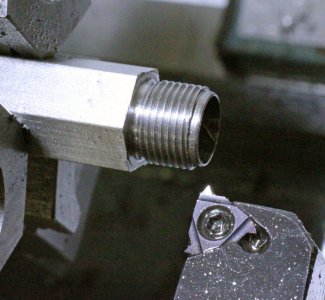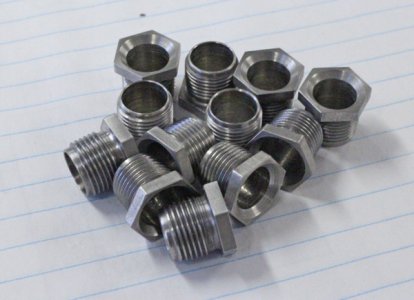I did some more threading today( 3/8-24) and am real unhappy with the results. I was using a brazed carbide tool and that may be the problem. What are you guys using to single point threads, HSS ? The partial profile carbide inserts look good but I can't run fast and am afraid they would give the same results. The thread I cut looked ragged and seemed like a poor profile. Should I be using HSS ?
Last edited:


